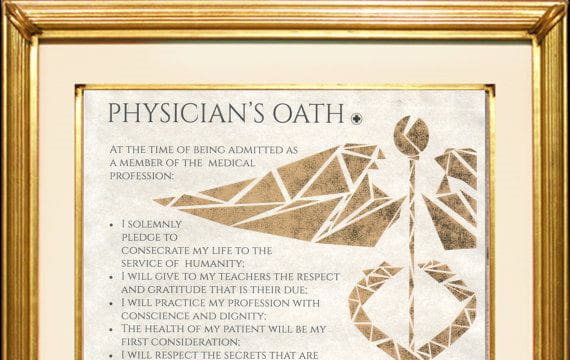Medicine stands as one of the most respected professions in Australia. In 2021, a poll by Ipsos Mori found that around two-thirds of the public rated doctors and scientists as individuals with the most trustworthy careers.
Last week, the University of Sydney Medical School (SMS) removed Associate Professor Hasantha Gunasekera, a paediatrics expert, from his position as a Unit of Study Coordinator in the Child and Adolescent Health (CAH) Block, due to a dispute over students’ disability adjustments.
The incident involved a major disagreement between SMS and Gunasekera over disability exam adjustments that were approved by the University, many of which Gunasekera deemed to be incompatible with medical practice. Later on, his decision was overridden by the Faculty.
At the beginning of March, fourth-year medical students sitting a number of CAH exams received disability adjustments approved by USyd’s Disability Support Services. These adjustments included differently-coloured papers and additional time to complete the exam (from 15 to 45 minutes extra), and were deemed excessive by Gunasekera.
The paediatrics expert argued that professional accreditation concerns superseded students’ disability adjustment plans. In an email, he notified all students who received an adjustment plan that their papers were “incomplete”, with the aim of forcing affected students to retake the exams.
“As the plan included provisions that make it impossible for me to make a determination as to whether or not you are safe to care for children, I will be informing SMP [Sydney Medical Program] Assessments [that] your CAH Assessment remains incomplete,” read the email.
Gunasekara also instructed the students to submit statutory declarations notifying medical accreditation bodies that they “need the provisions in your Disability Plan when [they] start work”. In anticipation of pushback against his decision, Gunasekera then emphasised the “importance of doing what you think is right, even if other[s] disagree, after careful consideration and consultation”.
This was not the case as, following “high level discussions” at SMS and the University, Gunasekera’s decision was reversed. Indeed, this was confirmed in a Canvas announcement from SMS Dean Professor Cheryl Jones:
“We have taken this matter very seriously,” Jones said. “We unreservedly welcome students and staff with a disability and do not condone discrimination by staff or students in any form, and respect the role of people with disability in the medical workforce.”
Jones also reaffirmed the School’s commitment to disability inclusion and adherence to adjustment plans authorised by USyd’s Disability Support Services.
“I further reiterate SMS’ commitment to respect and implement any disability accommodations approved by the Inclusion and Disability Services,” said Jones.
Although the School’s swift action under Jones’ leadership meant that affected students no longer had to retake the exam, the situation raises questions about transparency and the precarious nature of being a disabled student in a fiercely competitive degree like Medicine.
Arguably, powerful tensions played out between the Medical School and Gunasekera, representing a proxy battle between Gunasekera’s technocratic ideals that favour discrimination, and a prestigious, demanding profession attempting to diversify itself.
Indeed, for SUPRA Disabilities Officer Eva Midtgaard, the original decision amounted to unjust discrimination against disabled medical students given that Disability Support approved the adjustment plans.
“I fear that Professor Gunasekera’s action displays an ableist attitude that is [as] equally inappropriate as racism and homophobia. I really feel his actions [were] devastating on many levels, the most obvious being that he is in a position of power and many non-disabled students look up to him,” she said.
Although the incident has been resolved, it is understood that some students remain uncertain about whether this may occur again in the future.
“I think, regardless of intent, this situation has revealed a very concerning culture within the medical profession. No individual should be able to qualify and practice as a doctor, without having a more educated and diverse understanding of disabilities than what this situation displayed.”
Medicine, like other accredited professions, is governed by a set of formal and informal internal policies that guide its development. One such policy is the Australian Health Practitioner Regulation Agency’s (AHPRA) guidelines for medical professionals, which stipulate that “a student may carry out clinical training with a mental health condition, physical health condition or physical illness, but that is not enough to trigger a mandatory notification”. These guidelines potentially explain why Gunasekera’s decision was revoked by the Medical School, seemingly falling short of the invisible threshold of “impairment” set out by AHPRA and the Medical School.
However, when applied to disclosures of disabilities, AHPRA’s guideline indicates that medicine remains a profession where a medical understanding of disability is deeply ingrained, a perception that disabilities are simply health problems to be managed by health professionals.
Reference to disability as an “impairment” demanding attention strongly suggests that the profession remains far from a social model of disability, as advocated by People With Disabilities Australia (PWDA).
“The physician, attitudinal, communication, and social environment must change to enable people living with impairments to participate in society on an equal basis with others,” said PWDA.
In this case, SMS and Jones’ swift reaction in reversing Gunasekera’s decision showed positive, if incremental, signs of a willingness to slowly pivot towards a social understanding of disability that may better accommodate disabled students.
The School should bear in mind the Hippocratic promises embedded in the Geneva Oath its graduates swear by: “I will not permit considerations of age, disease or disability … or any other factor to intervene between my duty and my patient”.





